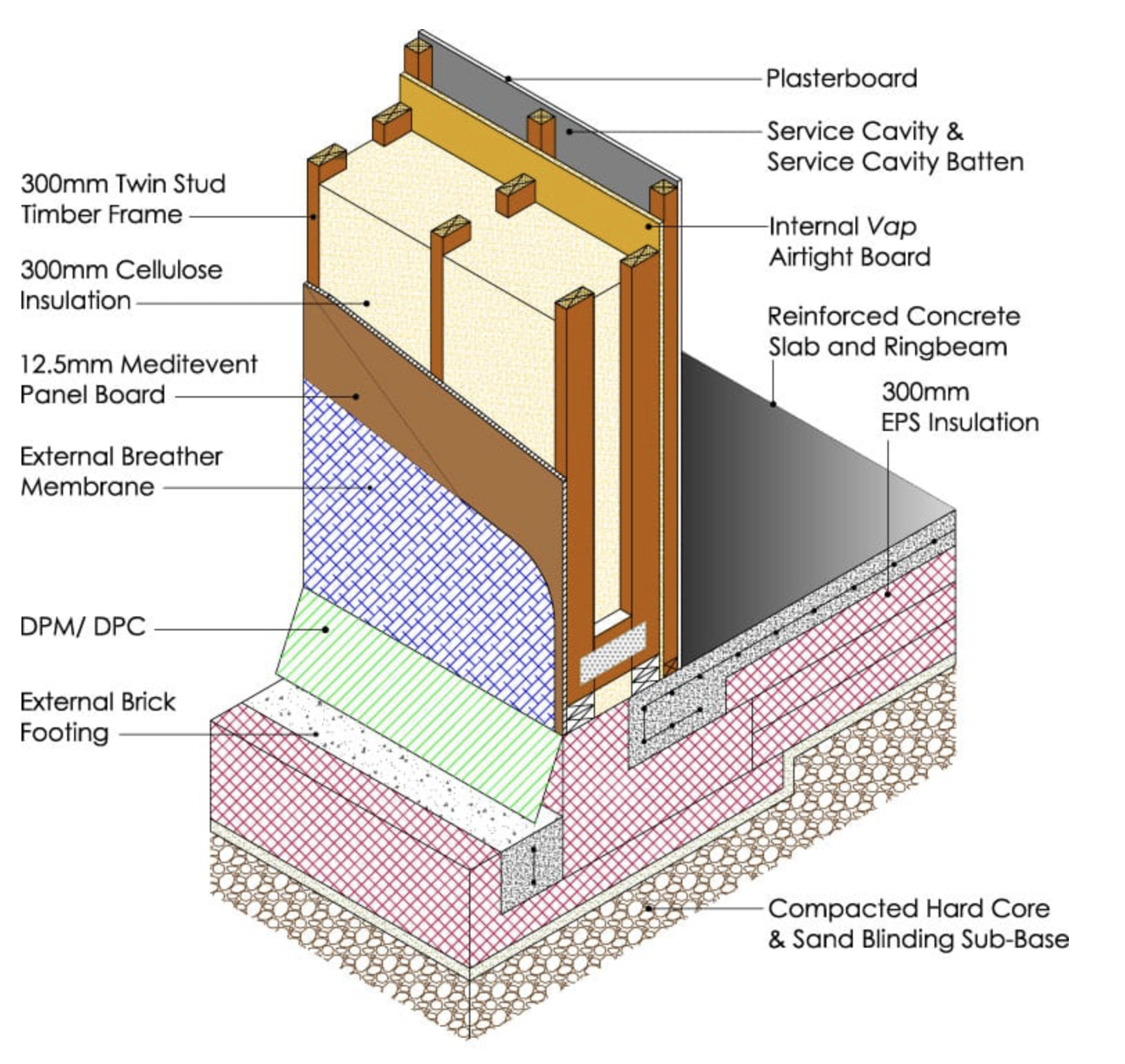Options for Passive House building methods
There are a number of ways to go about building a passive house and many different construction methods are used, but the easiest and most commonly used route is some kind of timber frame structure with a cladding of your choice on the outside, mounted on a super insulated foundation. I have built and project managed timber frame, timber clad constructions before and really like the aesthetic so decided timber frame with timber cladding was the route for me.
The most common method of timber frame construction is to factory build framework with rigid insulation fitted between the studs and then assemble on site. This is what I had done previously, but to gain the levels of insulation and airtightness needed it would required further insulation fitting on site and a level of attention to the air tight membranes that is beyond most frame erectors. After speaking to a number of timber frame companies it was clear that most were not interested in putting in the extra effort required at first fix stage as it would slow them down to much.
I also looked at SIP panel construction where insulation is sandwiched between 2 sheets of osb board and then craned into place on site. This is a good construction method for gaining good airtightness, but I would still need to site fix further insulation internally to meet the required standard.
Both of these methods rely on large amounts of oil based rigid foam insulation, which is great for keeping the heat in, but due to its light weight nature can allow spikes in temperature and overheating, which can be an issue in super insulated houses. People talk about ‘thermal mass’ to regulate heat, which it seems is quite an over simplification of the subject, but a foam house definately has very little.
The issue seems to be not just ‘thermal mass’, but Decrement delay and thermal buffering which is further explained here. What I needed was a construction type that would allow the transfer of heat to happen more slowly, evening out any spikes in external temperature.
Choosing a Timber frame company a Passive House
I chose to go with a factory built system from MBC Timber Frame, a company that specialise in Passive type builds who use a twin wall hollow panel system that is then pumped full of cellulose insulation (shredded newspaper with fire retardent). I had met the company at a trade show and had also made contact with a number of other Passive house self builders who were very happy with the system and contractors. There were a number of advantages with the system and company. The cellulose insulation is very dense when pumped into the walls and provides a high level of insulation that has a long decrement delay, and so massively reduces the temperature spikes often associated with timber frame lightweight clad buildings. The main advantage for me was that the same company would be responsible for the design and installation of the foundation slab and air tightness and would guarantee a airtightness test figure to pass the Passive House regulations.

